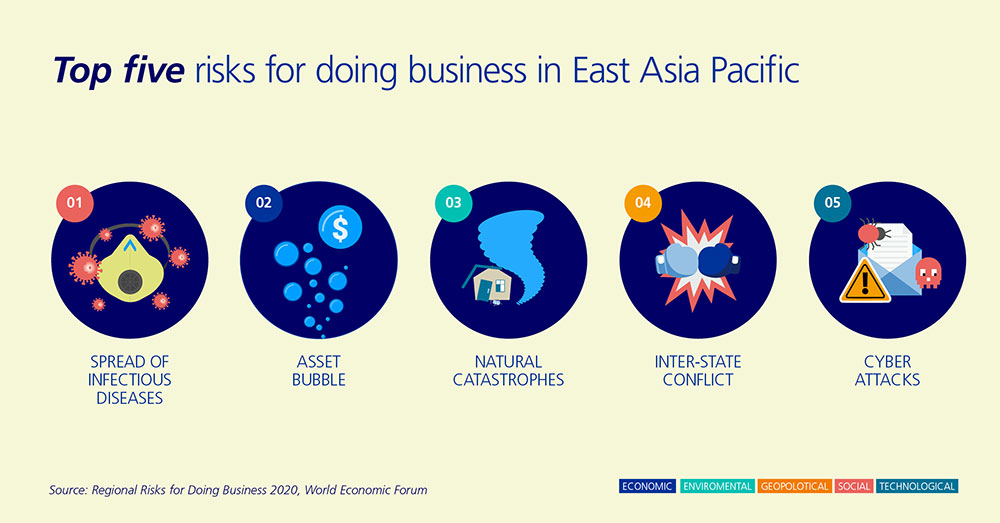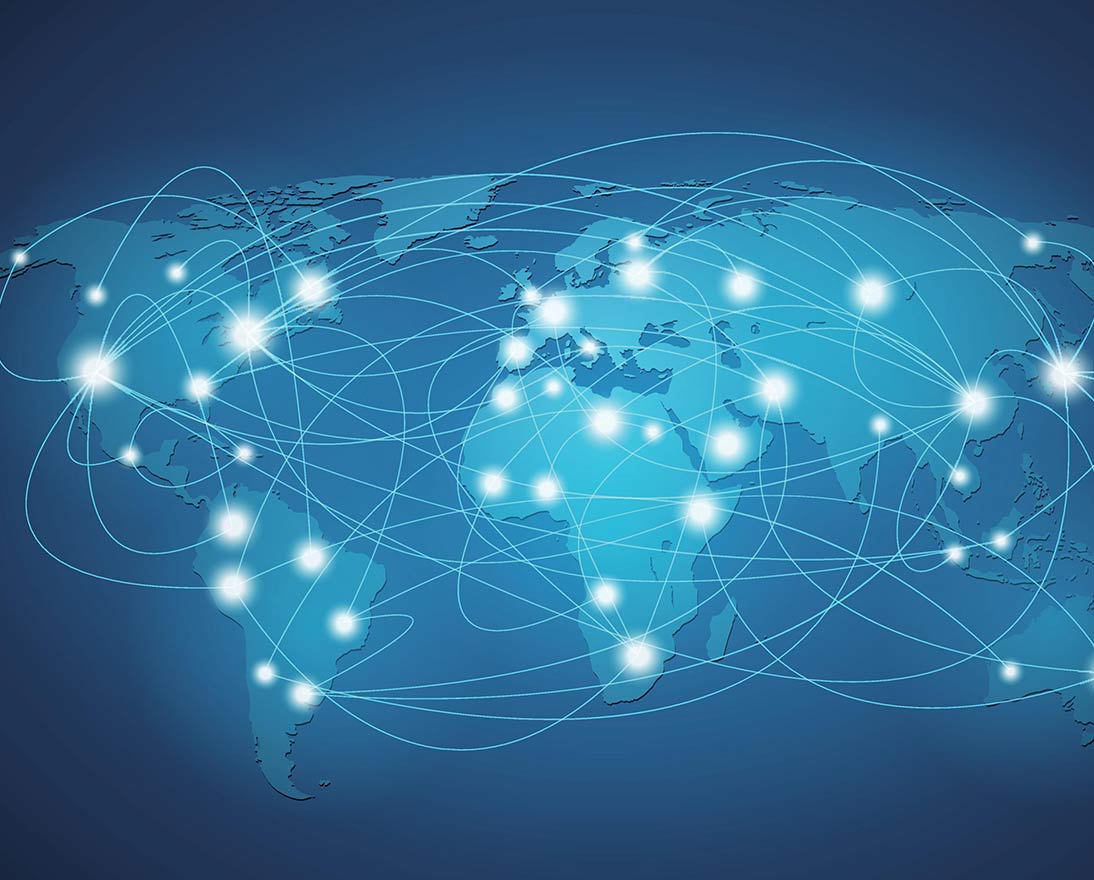Could Covid-19 create an unbridgeable chasm?
Global risksArticleOctober 23, 2020
Covid-19 has exposed and exacerbated the divide between the haves and have-nots. Jack Howell, CEO of APAC, asks if the pandemic could turn the divide into an unbridgeable chasm.
In every corner of the globe there is a divide between the haves and the have-nots. But the Covid-19 pandemic has shown that the divide within countries and between countries could be wider than we had imagined – and that the virus could turn it into an unbridgeable chasm.
Pandemics target the most vulnerable in society. They go after the elderly, people in poor health, and those whose working lives and living conditions leave them more exposed to contagion. It means a pandemic goes disproportionately after the poor.

Understandably, the APAC results of the WEF’s 2020 Risks for Doing Business Survey, ranked the ‘spread of infectious diseases’ as the top risk to business. In second place, is one of Covid-19’s potential economic fallouts – the risk of an asset bubble.
Surprisingly, ‘profound social instability’ is not ranked in the top 10 – despite being ranked fifth globally. It’s a risk that should not be overlooked – especially if inequalities are intensified.
Covid’s preference for targeting the poorer parts of society has been particularly evident amongst those living in poverty. Not only are they typically low wage workers most exposed to the virus – they are also hit hardest by its impact. Often dependent on a daily wage and casual work, Covid-19 and the resulting restrictive measures have reduced the ability to travel to places of work and caused a significant loss of earnings.
This situation is compounded as low wage workers are also unlikely to have any form of social protection to supplement their lost income and less likely to have access to healthcare.
Healthcare inequalities exposed
In relation to Covid-19, healthcare inequalities between countries are perhaps even more worrying as some APAC countries are clearly ill prepared to deal with a pandemic.
Research from the United Nations Development Program (UNDP), for instance, shows that Australia has 35.9 physicians and 127 nurses per 10,000 people; compared to just 3.8 physicians and 21 nurses in Indonesia. It won’t take much for the pandemic to overwhelm Indonesia’s healthcare system.
Preparedness of countries to respond to Covid-19
(APAC: selected countries)
| Country | Physicians (per 10,000) | Nurses (per 10,000) | Hospital beds (per 10,000) |
| Australia | 35.9 | 127 | 38 |
| New Zealand | 30.3 | 110 | 28 |
| Japan | 24.1 | 115 | 134 |
| Singapore | 23.1 | 72 | 24 |
| China | 17.9 | 23 | 42 |
| Malaysia | 15.1 | 41 | 19 |
| Vietnam | 8.2 | 14 | 26 |
| Thailand | 8.1 | 30 | 21 |
| Indonesia | 3.8 | 21 | 12 |
Source: UNDP
Then there’s the question of the Covid-19 vaccine. When it eventually comes, its distribution is likely to differ across rich and poor countries, further accentuating healthcare inequality.
Covid-19 has stoked another longstanding inequality: the gender gap. While both men and women have been forced to stay at home due to lockdown policies, women are more likely to take care of children during the closure of schools and daycare facilities. In fact, many withdraw from employment all together.
In addition, women across the world are more likely to hold jobs in retail and hospitality where remote working is less possible, and which are particularly hit by lockdown-induced job losses.
The Digital Divide
Covid-19 has also stoked a new inequality: the digital divide. Digital innovation and artificial intelligence are a potential equalizer as they can enable poorer communities to access education, health and financial services. But this potential can only be realized if everyone has digital access.
The digital divide has become more significant than ever as widespread lockdowns mean many people are having to rely on internet access to work, continue with their education, and interact with others.
Yet, hundreds of millions of people around the globe still don’t have access to reliable broadband internet. Data from the UNDP shows that people in New Zealand or Japan are about 10 times more likely to have a fixed broadband subscription than people in Indonesia.
Fixed broadband subscriptions per 100 people (APAC: selected countries)
| New Zealand | 34.7 | Vietnam | 13.6 |
| Japan | 32.6 | Thailand | 13.2 |
| Australia | 30.7 | Malaysia | 8.6 |
| China | 28.5 | Indonesia | 3.3 |
| Singapore | 28.0 | Cambodia | 1.0 |
Source: UNDP
A time to switch focus
We are witnessing only the beginning of the virus’ economic and social implications. The post-pandemic world could experience even greater inequalities unless governments do something.
Often when we discuss the outlook for APAC, we talk about the ‘haves’ and focus on the rising number of affluent and middle-class consumers. Now, it’s time to switch focus on the ‘have-nots’.
It we want to ‘build back better’ following the pandemic, then it’s important we don’t leave anyone behind.
Covid-19 won’t be controlled until it is controlled everywhere. It’s a matter of self-interest – as well as a humanitarian concern – for the more developed countries to support the least developed countries.
Without it, the pandemic will persist longer than it otherwise would, global inequalities will grow, and there will be global divergence of chasmic proportions.







